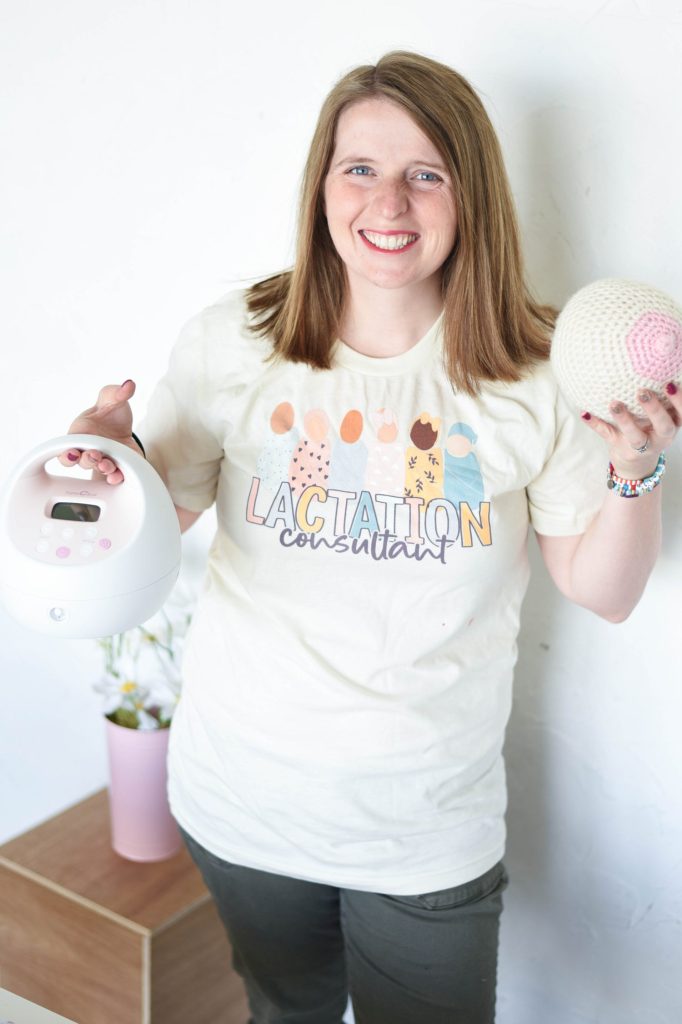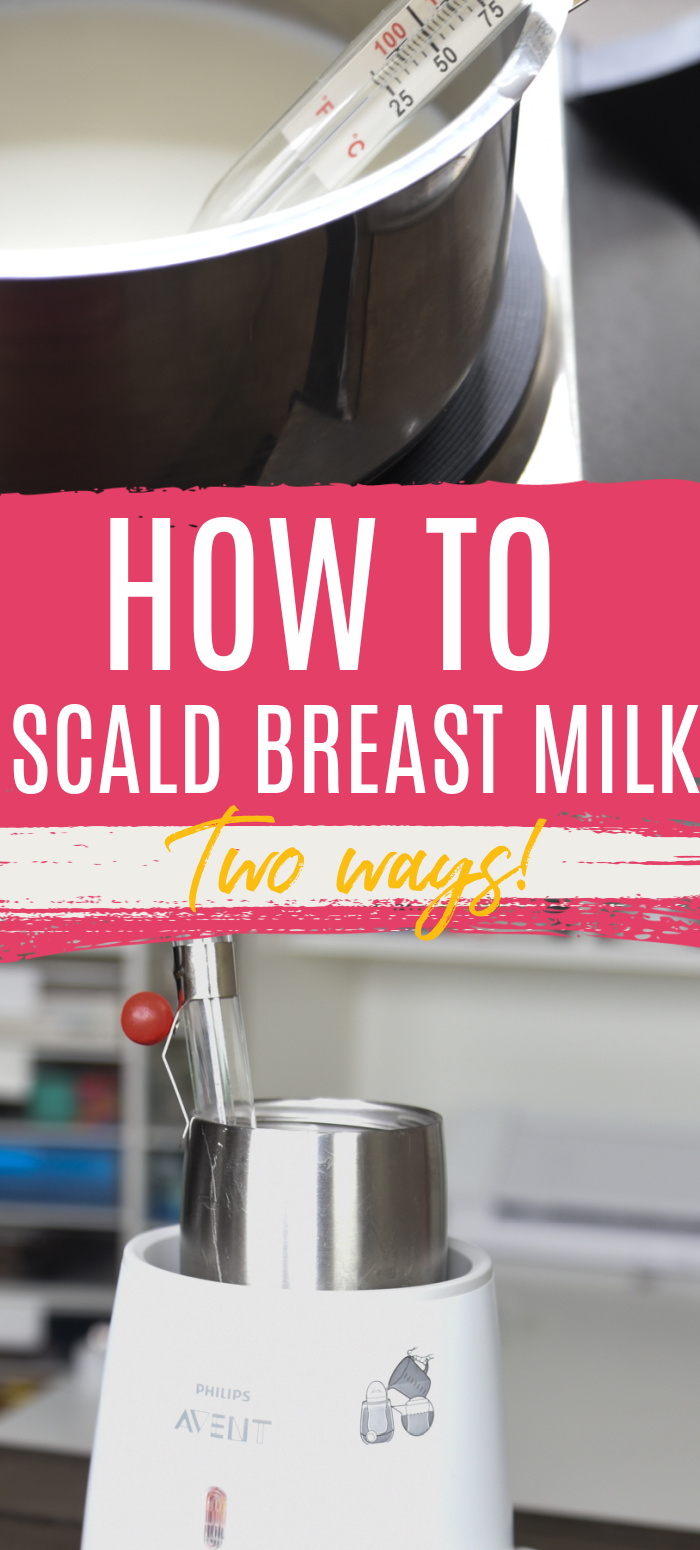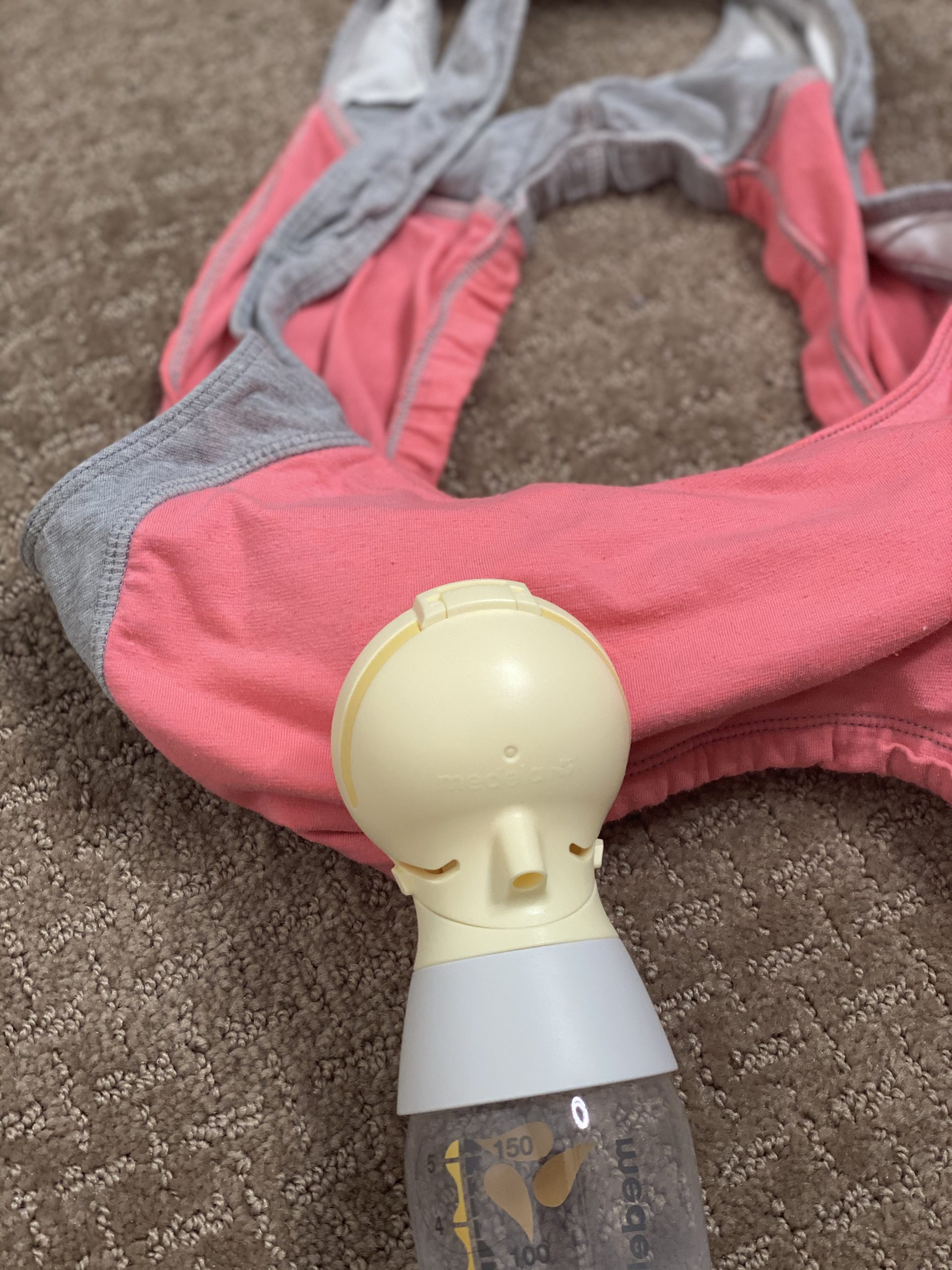You might be wondering what breastfeeding is going to look like after your baby is born? While it can vary quite a lot (depending on the delivery method and how the baby is doing) here are the basics on what to expect. I’ll also share a few complications that can disrupt it!
But, how do I know so much about breastfeeding after birth? Hi, I’m Hilary – most people know me as The Pregnancy Nurse. I’ve been a nurse since 1997 and I have 20 years of labor and delivery experience. As you can imagine, that means I’ve helped a LOT of people breastfeed after birth, and I’m excited to share my experience with you.
Right After Birth
Ok, so BABY IS BORN. (this section will be about a vaginal delivery, I’ll talk about cesarean in the next section – although a lot of it is similar)
Most often, your provider will do delayed cord clamping (that is standard of care in the US now for 30-60 seconds). During this time, your provider will hopefully put the baby up on your chest, but some baby’s cords aren’t long enough – so the baby will be more on your abdomen. The provider, baby nurse and you can all help hold the baby there until it is time to cut the cord.
There are many benefits to delayed cord clamping, including providing your child with additional iron stores!
After the cord is cut, the baby can get on your chest skin-to-skin (pull your gown and bra down so the baby can be directly on you). I’ve seen SO many benefits from this:
- Helps stabilize the baby’s body temperature
- Helps stabilize YOU now that your little baby heater is gone too
- Baby feels calmer hearing you and feeling you nearby.
During all of this the nurse in charge of the baby (most often there is someone in charge of the mom and one in charge of the baby) will be drying and stimulating the baby. It’s important that babies not be surrounded by wet linens so they don’t get cold, and we also want babies to cry to clear the fluid from their lungs.
She’s also going to be watching the baby’s heart rate and color as well as their tone is (if they’re just “laying” on your chest or if they’re curled up tight). At one minute and 5 minutes after birth the nurse will give an APGAR score.
This score is just an easy way to communicate, among providers, how a baby adjusted to living outside your womb. If the baby isn’t thriving at 5 minutes we may also assign further Apgar scores.
Your job during all of this is to just revel in the magic of childbirth. You created a human being with your partner and now that baby is here and it’s time to love them.
The delivering of the placenta, loving the baby, feeling the baby, and smelling the baby will help your milk “turn on”. Don’t feel pressure to immediately get the baby on your breast. Baby is still adjusting, and you’re likely still adjusting so I really recommend just loving that baby for the first little bit.
From Katie – allow your baby to take the lead and if they are interested in latching, encourage them! This is a great video showing the breast crawl, which shows how intuitive many babies are. If baby doesn’t want to latch, I would suggest hand expressing a little in the first hour.
During this time your provider will also be checking to see if there are any tears in the birth canal/perineum and possibly sewing that up.
Pro Tip: Honestly, all of that can get super overwhelming and a LOT of patients feel too unsteady to have their baby on their chest. If, at any point, all of that is too overwhelming, please let the staff know. Baby can go over into the warmer (that will always be set up in case the baby has any issues) or can go skin-to-skin with your spouse/support person if they’d like to. Don’t feel like you HAVE to have the baby on you if you’re just feeling like it’s too much! You can always have the baby back with you once you’re feeling up to it!
After your provider is done with any stitching and we clean you up, we’ll re-attach the bottom of the bed and get ice between your legs.
This is a great time to get a little food into you – many people love some saltines and juice at this point and then they’re ready to possibly breastfeed.
The good news is that you’re going to have a lot of nurses in your room. One nurse to check on you and possibly also another nurse to help with the baby. You can ask any of them for help. All of the nurses in your room should be trained on basic breastfeeding and know when to get more help when they/you need it.
You can try to latch on the baby if you feel like you’re ready to, or just ask for help. We’re happy to help.
The important part in this juncture is that the baby will give a few sucks and then stop, and then a few sucks and then may drop the breast and then you can re-latch them on.
It’s not going to the rhythmic sucking that you see in other breastfeeding babies. Baby is not used to this, she’s been eating the placental buffet until just a few minutes ago and a LOT is going on for them.
So, while it’s essential to stimulate the breast, it’s also great to just love that baby. DO NOT FREAK OUT about the latch. There is no need, and ultimately your stress will inhibit the milk more than the baby latching on will help.
Note from Katie – learning about how infant reflexes play a huge part in feeding can make this process easier. The harder we try and make it look perfect, the harder it often gets. I talk about this in all my prenatal consults, so if you’re pregnant, make sure to request one here!
Keep asking for help when you need it, and also just feel the warm glow of a new baby.
Pro tip: Dim the lights as much as possible so the baby will open their eyes. Your provider can even have the bright lights on your perineum to check for any issues down there, but the room lights can be low so the baby isn’t inundated with light. Those little eyes are so sweet.
Breastfeeding with a C-Section
Ok, the baby is born and they should still do delayed cord clamping.
Usually they’ll show you the baby but then take it over to the warmer right away (not your chest) to be able to assess how the baby is doing. Babies who are born via c-section often have a harder time adjusting to life outside the womb, and it would be hard for them to check them out well on your chest (as it’s covered by surgical equipment.
After the 5-minute apgar you can ask for the baby to come to you, or be weighed. It kind of depends on what you want (and how the baby is doing). If you prefer the baby to come immediately to you as soon as possible let them know.
CAVEAT: A lot of people THINK they want this ASAP but once they get into the c-section and they’re laying on the table it’s just too much. Yes, they want to see the baby and let dad hold the baby but it feels pretty unstable to have the baby on your small amount of chest that’s available and you’re also not feeling your best. Remember, you’re in major abdominal surgery!
They should assist you in breastfeeding in the OR if you really want it and everything is going fine. If that’s the case, ask for it (but also, don’t be afraid to change your mind). Sometimes, anesthesia isn’t OK with it because of how stable you are or how the case is going – so it sometimes can’t happen.
Remember, this is major surgery. You can feel however you want to feel. You can ask for what you need, and hopefully, they can accommodate you.
If you’re NOT feeling up to it, I’d have them do the weight, footprints, etc if they can. Dad can head over to the baby to take all the pictures and anesthesia might even be able to give you something for anxiety if you want.
Here are some additional posts about breastfeeding after a c-section:
- Best C-Section Breastfeeding Positions
- 6 Helpful Tips for Breastfeeding After a C-Section
- 8 Breastfeeding Problems After a C-Section
Honestly, how you’re going to handle those minutes is just not something you can make your mind up about in advance – so keep your options open. Tell the staff what you’re hoping for but that you know things could abruptly change course.
The other good news is that it doesn’t take long to finish up the surgery. Usually, another 20 minutes, and they’re done and headed to PACU (post-anesthesia care unit).
Once you get into the PACU that’s a great time to get skin to skin for mom or dad. They will help with breastfeeding (honestly, almost entirely if you want to nap during it, you can).
What I mostly recommend for moms who have a c-section is to be mindful of themselves, don’t overdo it. There isn’t something that you skip because you’re not doing well that you can’t make up for afterward.
Pro Tip: Talk to lactation, tell them what went on at delivery and see if there are steps (like pumping) that could help your production.
Once you’re in PACU your skin-to-skin and breastfeeding will be the same as a vaginal delivery – love that baby, and try to latch on but don’t be stressed about it. Loving that baby is one of the best things you can do for milk to come in.
Bumps in the Breastfeeding Road
There are a few things early in the baby’s life (or your life) that could cause a bump in this breastfeeding journey. The main ones are:
- Baby not breathing well (obviously, breathing comes over breastfeeding)
- Baby’s blood sugar – this might be a concern if your child is IUGR or you have gestational diabetes.
- Mom having issues with the placenta or bleeding
And just like with a C-section you’re going to ask to see lactation, tell them what went on and what bumps you had, and then see what they recommend for YOU based on your needs at the time.
General advice is fantastic, but the issues above change our plan of care for breastfeeding, so you need someone to take all of that into account.
Note from Katie – many hospitals have a real lack of of lactation support on staff, and the ones that are there can be really burnt out. Making a connection with an IBCLC before you give birth can help you to feel more confident and supported while you’re at the hospital and waiting for someone to come help you.
Postpartum Room Breastfeeding
In most hospitals, at some point, you’ll switch to a postpartum room from the delivery room. We’ll get you up to the restroom for the first time at that point too. It’s nice to get a new, fresh bed and a clean room when you switch. You’ll be in this room a bit longer, so feel free to set up some of the things you’ll want around you.
Baby is going to be awake for 1-2 hours after birth. That is your best time to try to get some sucks from the baby. Once the baby falls asleep they need a real hard nap (you will too) so I recommend you try to get some rest when the baby does too!
Baby often sleeps for a couple of hours and this is a SMART time to get your rest in too. That means not telling family to come (or frankly, not even letting them know) until you’ve had that nap. Dad can get in on the nap too. Baby can safely go in the bassinet while you all sleep!
Pro Tip: Baby should NOT be in bed with you when you’re asleep. Those beds are narrow and I’ve seen the aftermath of a baby falling and what happens then. Make sure to put baby in the bassinet when you’re sleeping.
Once the baby wakes up you’ll start a rhythm of checking for signs that they are hungry and trying to feed them. The hospital will encourage you to not go much past 3 hours between feedings (although there is a bit of leeway during that first nap). You may need to unswaddle the baby to wake them up a bit while you’re in the hospital but don’t hesitate to get help.
While you’ll have nurses, most hospitals have a lactation consultant on staff and I recommend EVERYONE see and talk with them. Let them check your latch to see if they have any tips. Ask your nurse if your hospital has one, and how to get seen.
My best advice for you as far as breastfeeding after birth:
- Don’t freak out. Things are loose on the first day after birth. Enjoy that baby – that, more than almost anything, will help bring those hormones to help your milk come.
- Ask for help – there are going to be LOTS of people in your room for the first 2-3 hours after birth. Don’t be afraid to ask for help from them.
- SLEEP! Many of you will not have slept for quite a while and getting rest is SO important. Some hospitals may provide a nursery or the baby can be tucked into a corner of your room while you get some rest.
Some hospitals may even have a nursery you can send the baby to so they can watch over the baby (including for any signs they’re ready to eat) while you get some REST. Don’t feel bad if that’s something you’d like to ask about.
Keep asking questions, find the experts that can help you like Katie and I wish you the very best with your new baby!
And if you’re still pregnant please do come join me in The Online Prenatal Class for Couples – it truly is the EASY way to get prepared for birth!







